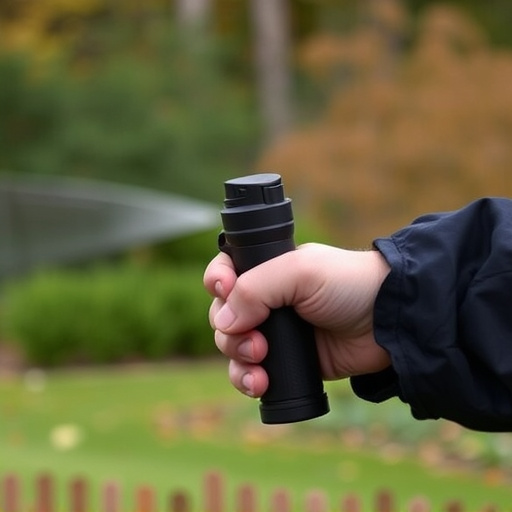Stun devices, or non-lethal weapons, are gaining popularity as a safer alternative to guns for self-defense. These tools temporarily disable attackers with electric shocks, offering individuals a way to protect themselves without lethal force. With varying global regulations and ethical debates surrounding their use, stun devices cater to personal safety needs where gun laws restrict ownership or when people prefer non-lethal means. Beyond stun devices, pepper spray and noise makers are also popular for different scenarios, providing multiple options beyond traditional firearms for personal security.
Discover the world of stun devices, unconventional yet powerful tools designed for personal safety. This comprehensive guide explores their effectiveness as alternative weapons to guns, delving into the science behind them and the various types available on the market. We’ll navigate the legal and ethical considerations surrounding their use while shedding light on real-world applications beyond traditional firearms.
Understanding Stun Devices: Unconventional Self-Defense Tools
Stun devices, also known as non-lethal weapons, represent a growing trend in personal safety and self-defense tools. These unconventional alternatives to guns are designed to incapacitate an assailant temporarily, providing individuals with an opportunity to escape or seek help. Stun devices operate on the principle of delivering an electric shock, which disrupts muscle control, causing the target to lose balance and consciousness for a brief period.
Unlike traditional firearms, stun devices do not involve the use of lethal force, making them popular choices for those seeking self-defense options without the risk of permanent injury or death. They come in various forms, from hand-held devices that resemble flashlights to body-worn units integrated into clothing or accessories. This modern approach to personal safety offers a compelling alternative to conventional weapons, especially in situations where gun laws restrict ownership or when individuals prefer non-lethal means for self-defense.
Legal and Ethical Considerations: Navigating the Gray Areas
The use of stun devices, often marketed as non-lethal alternatives to guns, has sparked intense debates surrounding legal and ethical boundaries. As more individuals seek self-defense options outside traditional firearms, the gray areas of regulation and morality become increasingly complex. One of the primary challenges lies in defining what constitutes a ‘non-lethal’ weapon, as stun devices can still cause significant harm and even fatalities under certain circumstances. This ambiguity has led to varying legal interpretations worldwide, with some countries allowing their open carry and use, while others strictly regulate or prohibit them.
Moreover, the ethical implications extend beyond legal frameworks. Stun devices, despite being promoted as safer alternatives, do not guarantee user safety or prevent accidents. Unintentional deployment, misuse, or use against vulnerable populations raises serious concerns about consent, reasonable force, and potential harm. As such, the discussion around these alternative weapons to guns necessitates a nuanced approach that balances personal security with public safety, accountability, and respect for human life.
Types and Applications: Beyond Guns for Personal Safety
Personal safety is a paramount concern for many individuals, and while firearms are a common choice for self-defense, there’s a growing interest in exploring alternative weapons to guns. Stun devices offer a non-lethal option for those seeking effective personal protection. These devices come in various forms, each with unique applications beyond just self-defense against armed assailants.
One popular type is the stun gun, designed to deliver powerful electric shocks that can immobilize an attacker temporarily. But stun devices also include items like tactical flashlights with high-intensity beams capable of disorienting or distracting an opponent. Some advanced models even incorporate GPS tracking and emergency alarm features. Additionally, personal safety devices such as pepper spray and noise makers are widely used as non-lethal alternatives for different scenarios, from crowded events to outdoor activities.
